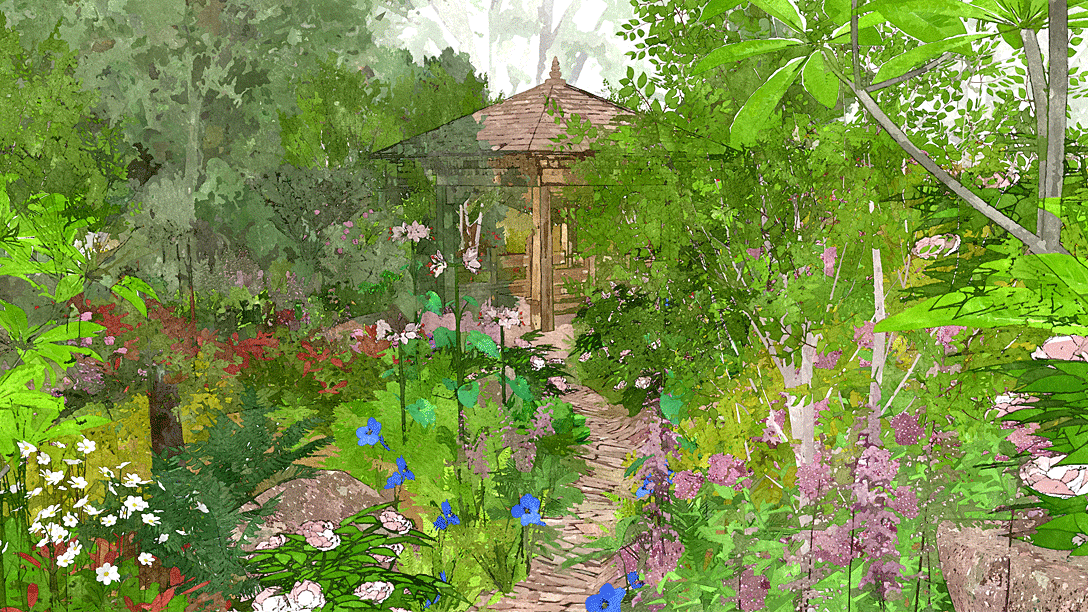Capturing the essence of place
The Trailfinders 50th Anniversary Garden was designed for Chelsea 2020 to illustrate the culture, plants and landscape of Nepal and the Himalayan foothills – a representation of the spirit of place in a garden
Many plant hunters travelled and collected extensively in this region in the 19th and 20th centuries, bringing back to the UK a huge number of plants that we know well. The conditions in the wider Himalayan region are damp, predominantly shady, fertile and slightly acidic – perfectly suited to the climate in many parts of the UK.
Planting up the garden
Thriving in damp shady conditions
Ferns are present nearly everywhere, and in the garden I planned to incorporate Dryopteris wallichiana (alpine wood fern). These would have been planted in rough drifts, sometimes acting as a matrix for taller flowering plants. Also enjoying the damp, shady conditions are rodgersias, euphorbias, primulas, Meconopsis (Himalayan poppy), irises and arisaemas. Rosa sericea pteracantha (winged thorn rose), which has delicate ferny foliage with red translucent thorns was to be included. This arching shrub rose, with beautiful white flowers, is perfect for other plants to grow through.


